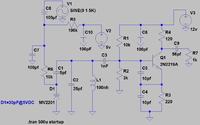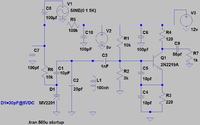- Joined
- Jan 22, 2008
- Messages
- 52,423
- Helped
- 14,752
- Reputation
- 29,786
- Reaction score
- 14,101
- Trophy points
- 1,393
- Location
- Bochum, Germany
- Activity points
- 298,112
I thought it to be really obvious. Connect A/C (rotor) to ground (they are already internally
connected, can't you see it?!) and B to the "hot" node.
connected, can't you see it?!) and B to the "hot" node.




